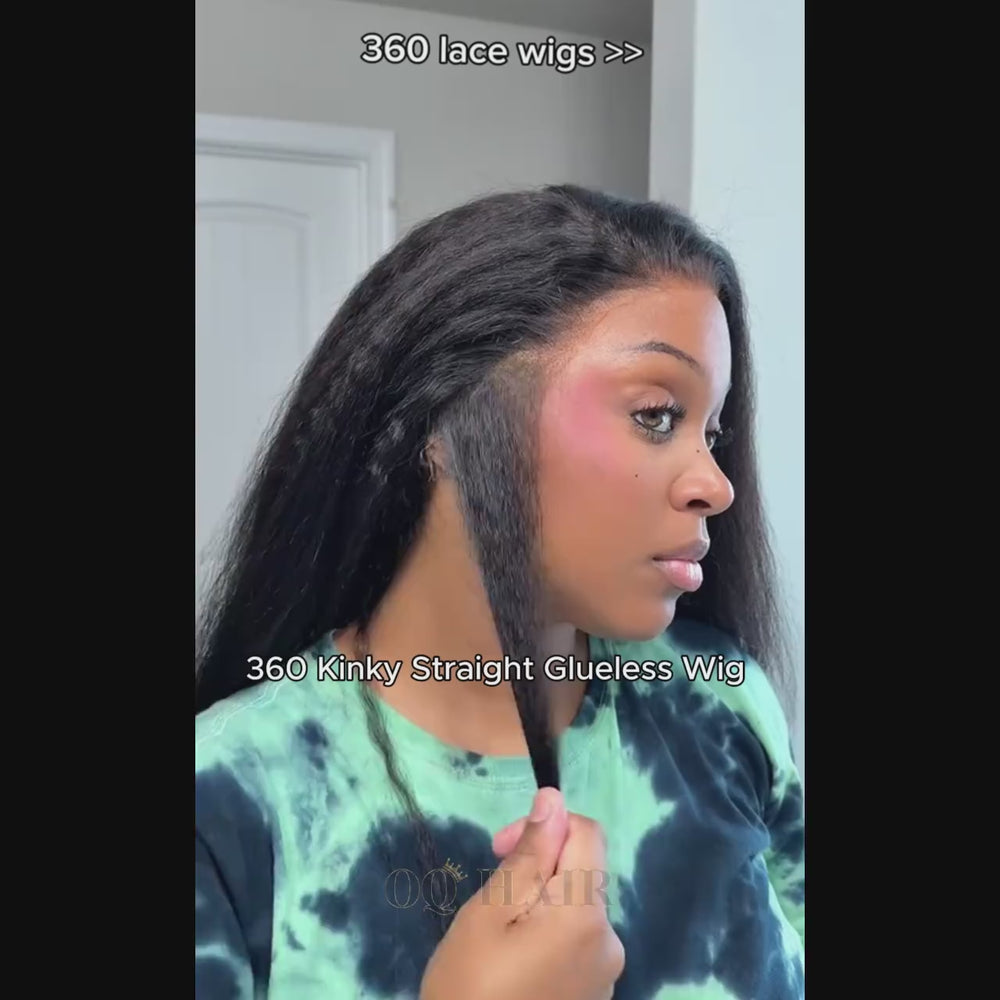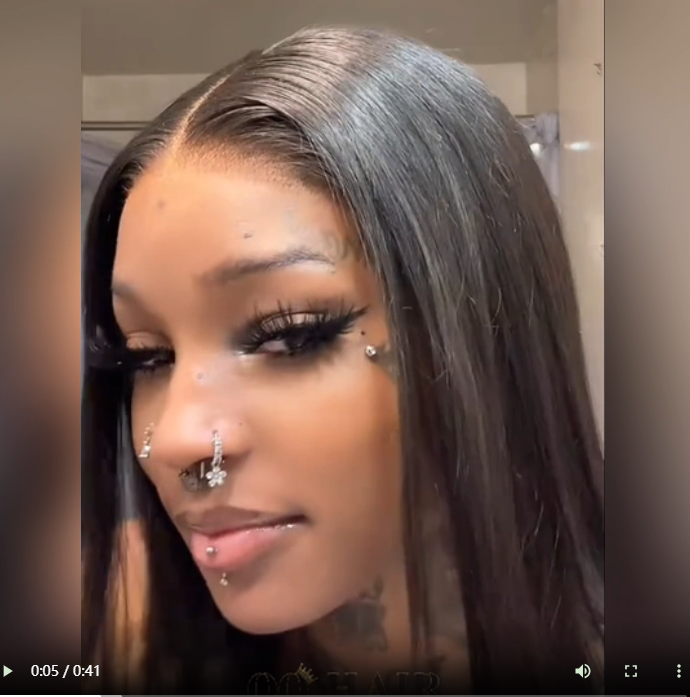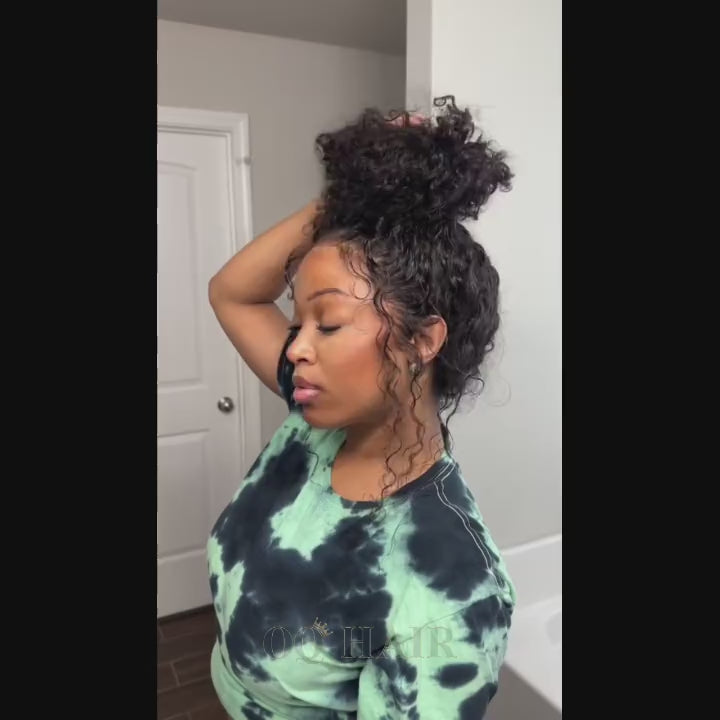How to Measure and Choose Wig Length for Beginners
When you are deciding to purchase a new wig, there are many factors to consider, such as texture, style, length, and hair source. Among these, choosing and measuring wig length can be a bit overwhelming for beginners. In this blog, we will provide step-by-step guide on how to measure wig length for beginners.

How to Measure Wig Length
Tools You May Need:
- Measuring Tape: A flexible measuring tape is the most accurate tool for measuring the length of the wig.
- Wig Head: Place the wig on a stand or a mannequin head to stabilize it during measurement.
Step 1: Prepare the Wig
Put the wig on the wig head and keep it secure. Comb the wig to remove any knots. If you don't have a wig stand or a mannequin head, you can lay the wig flat on a table or another even surface.
Step 2: Start at the Crown
Begin measuring from the crown of the wig, which is the highest on the wig’s cap. If you are measuring the wig on a table, please avoid placing the measuring tape at the front hairline! Make sure to measure from the top of the wig cap.
Step 3: Measure the Length
Hold the measuring tape at the crown and let it fall down along the back of the wig. Make sure the tape follows the natural flow of the hair. Gently extend the tape until you reach the desired length you want to measure.
Step 4: Read the Measurement
With the measuring tape extended to the desired length, read the measurement where the end of the tape meets the bottom edge of the wig. This measurement indicates the length of the wig.
Step 5: Record the Measurement
Take note of the measurement in inches or centimeters, depending on your preference or the unit the wig manufacturer uses.

Tips You Should Know:
It's important to note that wig lengths are typically measured from the crown of the wig to the tips of the hair strands. Keep in mind that due to the curvature of the head and the way wigs are constructed, the length may vary slightly depending on how the wig is worn and the natural distribution of the hair.
Wigs can come in different styles (straight hair, curly hair, Wavy hair, etc.), so the length may appear slightly different based on the style of the wig. The wig length of straight hair should be measured by the length from head spin to the longest hair at the bottom. Wavy and curly hair needs to be stretch to straight to measure the length. Because unstraightened curls and waves appear shorter than the actual length (about 1-3 inches).
8-30 inches Wig Length Chart
Wig lengths are typically measured in inches, with one inch being approximately equal to 2.54 cm. Most brands in the market offer a range of common wig lengths, spanning from 8-inch short bob hair to 32-inch long wigs. These lengths reflect the most common natural hair lengths. The most popular range of lengths falls between 10 inches and 26 inches. Wigs within this range strike a balance, not being overly long or too short, making them manageable for most individuals. Here is a wig length guide to serve as a reference for you:
8 inch wig length: The length of an 8-inch bob is approximate between your lips and chin. This length of wig is not only lightweight but also full of chill vibes. Ideal for summer wear.
10 inch wig length: A wig measuring 10 inches in length reaches the chin area, providing a cute and lovely style. This hair cut length can modify your face shape very well.
12 inch wig length: A 12 inch wig falls around the collarbone, offering a versatile length suitable for various styling options.
14 inch wig length: At 14 inches, the wig reaches the upper chest area, providing a medium-length option that can be styled in different ways.

18 inch wig length: A 18 inch wig wig extends to the chest, offering a longer length that allows for various styling choices.
20 inch wig length: The 20-inch wig falls to the lower back, providing a relatively long length that can be worn down or styled in updos.
22 inch wig length: At 22 inches, the wig reaches the long to mid-back area, offering a substantial length for creating elegant hairstyles.

26 inch wig length: With a length of 26 inches, the wig extends to the waist, allowing for stunning long hairstyles.
28 inch wig length: The length of the 28 inch wig is roughly around the waistline and may extend below the waist. This length will provide a mid-length to longer styling option that will suit many different hairstyles.
30-32 inch wig length: Wigs in this range extend from mid-back to thigh-length, providing a truly dramatic and attention-grabbing appearance.

How to Choose Wig Length
1. Consider Your Face Shape: Your face shape plays a crucial role in determining the most flattering wig length. Different lengths can enhance or balance your facial features. Here are some general guidelines:- For a round face, longer wigs that reach below the chin can create the illusion of length and slimness.
- For an oval face, a wide range of wig lengths can be flattering, but avoid extremes that hide your face shape.
- For a square face, wavy or curly mid-length wigs can soften angular features.
- For a heart-shaped face, wigs with layers and volume around the chin area can balance your forehead and jawline.
3. Lifestyle and Activity: Think about your lifestyle and daily activities. Longer wigs may require more maintenance and can be less practical for certain activities. Shorter wigs are often more convenient and low-maintenance.
4. Occasion: Consider the occasions and settings where you plan to wear the wig. Shorter wigs are often more casual and versatile, while longer wigs can be elegant and suitable for formal events.
5. Hair Texture and Style: The wig's texture and style can affect how a specific length looks on you. Straight, curly, or wavy wigs can change the visual length, so take that into account when choosing a length.
6. Personal Style: Your personal style preferences also matter. Some people feel more comfortable and confident with longer hair, while others prefer the ease and simplicity of shorter styles.









